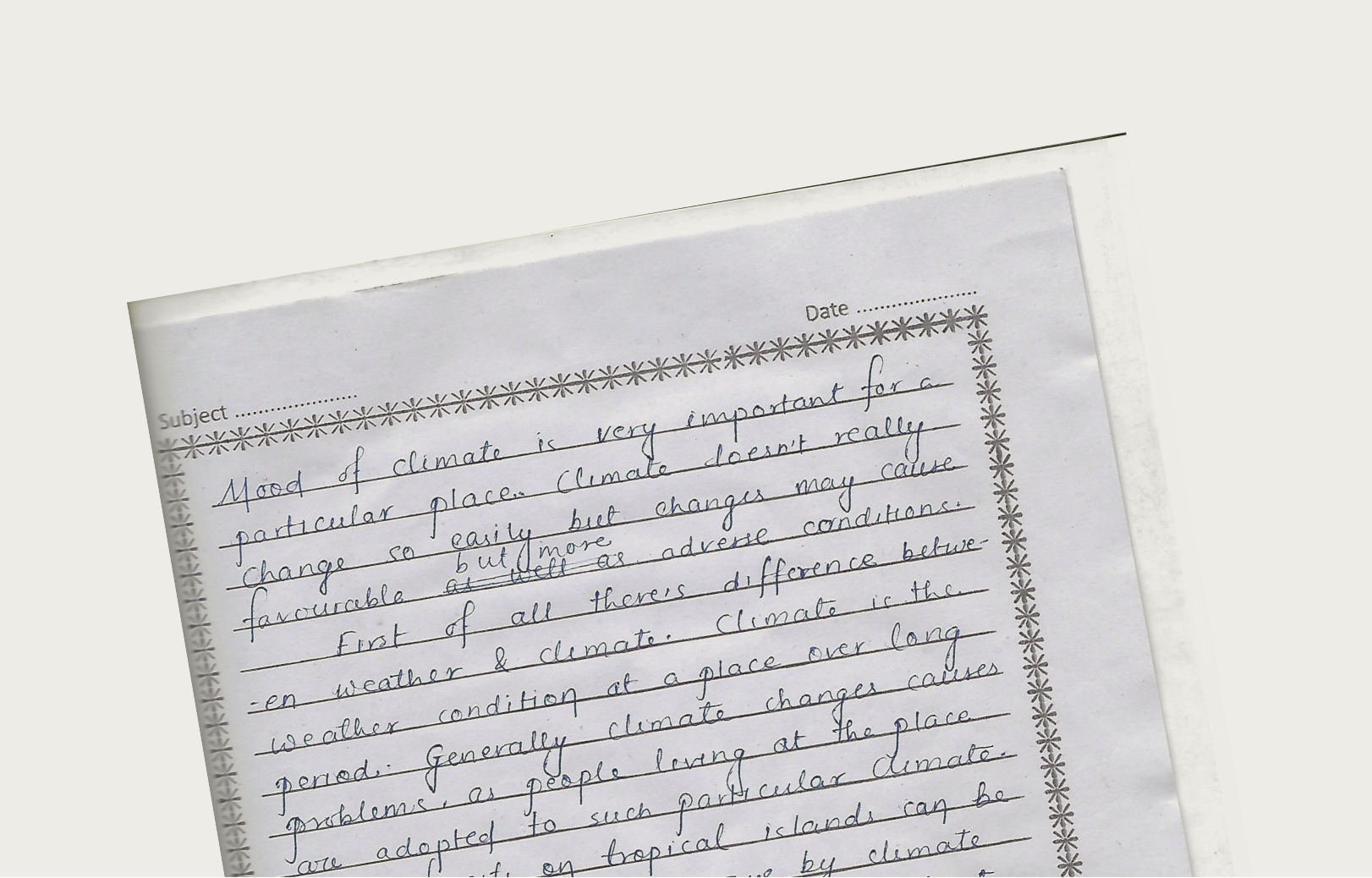
By Keshav, age 17, India
Published 2 March 2020
Tropical islands, hard hit by multiple effects of climate change, are doubly vulnerable as they have fewer resources to mitigate and adapt to its challenges.
There is difference between weather and climate. Climate is the atmospheric conditions of a place averaged over a long period. Researchers typically average weather data over thirty years to describe climate of a region. So, changes in a place’s climate are changes that persist over a period longer than thirty years. Changes to climate may cause favorable conditions for some living species as well as adverse conditions for other living species.
Generally, climate change causes problems as people, animals and vegetation living at the place are adapted to such particular climates. The forests in tropical islands are critical at supporting endemic and often endangered flora and fauna and are home to remarkable diversity of host cultures. Change in climate can affect flora and fauna very badly:
- Fauna can be forced to migrate to a suitable place for them, if this place exists on the island, or may end up adapting or dying out. Flora of that area will shift or adapt, when possible, or progressively die due to the changing environment.
- As organisms are interdependent and related, other species not directly impacted by changing climate may still reach the verge of extinction or become endangered because of their dependence on climate-impacted species.
- The intensification of extreme events can create a particular risk for local endemic species.
- Climate change poses major challenges to communities in tropical islands.
It is now well established that climate change is more and more impacting tropical islands in a wide variety of ways including through the sea level rise, intensifying extremes in storms, temperatures, and precipitation, and creating favorable conditions for forest fires and invasive species.
As with most other tropical regions, baseline capacity to understand and mitigate climate change is often limited by a lack of financial resources to cover expensive monitoring efforts, associated instruments and trained experts. A mismatch exists between mitigation and adaptation approaches developed for large scale applications and the often small-scale of local needs. Conversely, the communities that make tropical islands their home often rely on traditional knowledge, tried and tested tools, nimble and often informal institutions and locally based ownerships. These communities who are vulnerable and have little – if any – access to relevant information, and are left to count on traditional knowledge in facing the challenges of climate change, with its strengths and limitations.
Impacts of climate change
Tropical regions are warming up like the rest of the world, with South America and northern Africa exceeding the global average. Tropical islands warm at rates that are similar to the global average, since their climate is most influenced by the oceans. The changes in rainfall are much more local and difficult to predict. Sometimes they even differ between the leeward and the windward sides of an island.
Researchers predict for the Pacific region continued warming and alterations in rainfall, such as a shift to more intense rain events with longer rain free periods. Because air temperature tracks sea surface temperature on tropical islands, projected increase in sea surface temperature for the Caribbean implies that by 2100, surface island air temperature will rise by between 0.5 to 5 degrees Celsius on average, depending on whether or not humanity will adopt a climate friendlier trajectory. Tropical areas will also be affected by changes in hurricane activities. In the Caribbean area for instance, Puerto Rico may get more extreme rainfalls from hurricanes while experiencing longer dry seasons.
By the end of the century, as a result of continued warming, tropical islands are expected to experience alteration of rainfall and sea level rise, an increased sensitivity to storms, salt water intrusion and contamination of fresh water resources and complete inundation for low lying regions and even whole islands.
In addition, the progressively warmer and increasingly altered rainfall in the tropical islands will promote the fitness of non-native, potentially invasive plant species that are more resistant to climate change impacts than native species. The combination of climate change and species invasions will alter forests dominated by native species. Further warming trends will likely affect the timing of breeding and the cycles of flowering and fruiting plants and subsequently, the organisms that depend upon them. In tropical islands, alterations to plant life cycles also impact traditional agricultural methods that have been used for centuries and phenological cues – that is, habits and cycles of flora and fauna that are triggered by climate and the seasons – to manage natural resources.
Intensive land development, high coastal population density and the effects of tourism-based industry all intensify the vulnerability of tropical islands to climate change and there are limited human and financial resources to address such problems.
Recognizing that climate change is one of the most serious threats to our planet and human welfare, many countries have now signed up to international climate change agreements that commit them to reduce greenhouse emissions. The challenge now is for the international community to create the systems, policies and culture needed to meet these targets and quickly. This necessity to develop climate action plans requires a new generation of ecologically informed social research.
Conclusion
Climate change causes great problems for living organisms, so clearly is not suitable for any organism in a particular region. We should totally keep this in mind and use the natural resources in as limited a way as possible. If we conserve resources rather than exploit them then that can surely have a positive impact on the climate and for that we need to think and research more deeply with a new generation of ecologically informed individuals.
